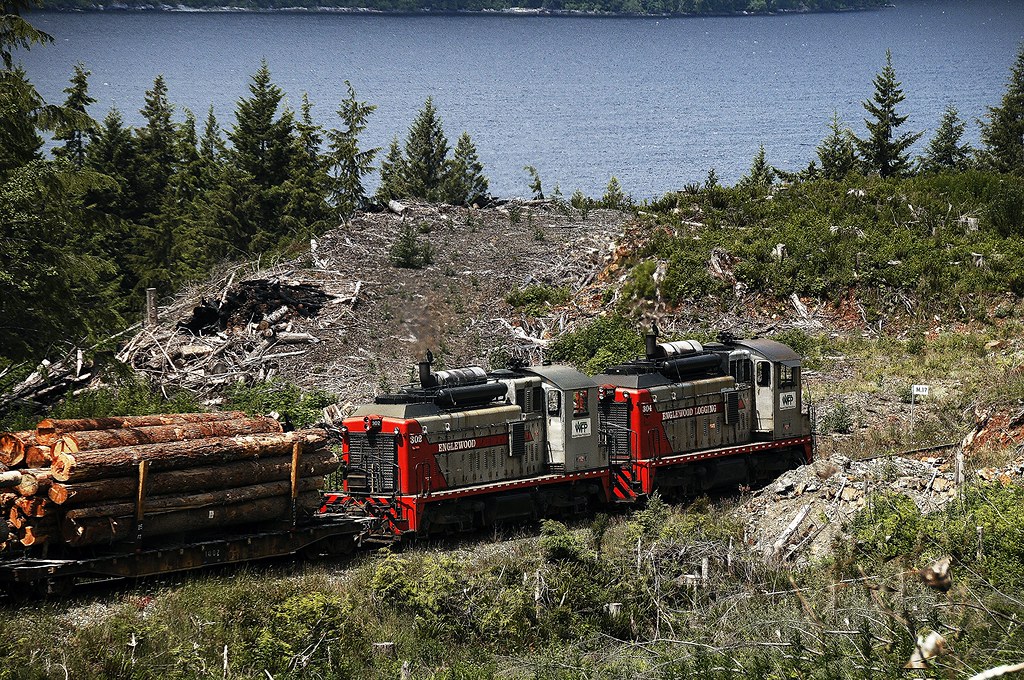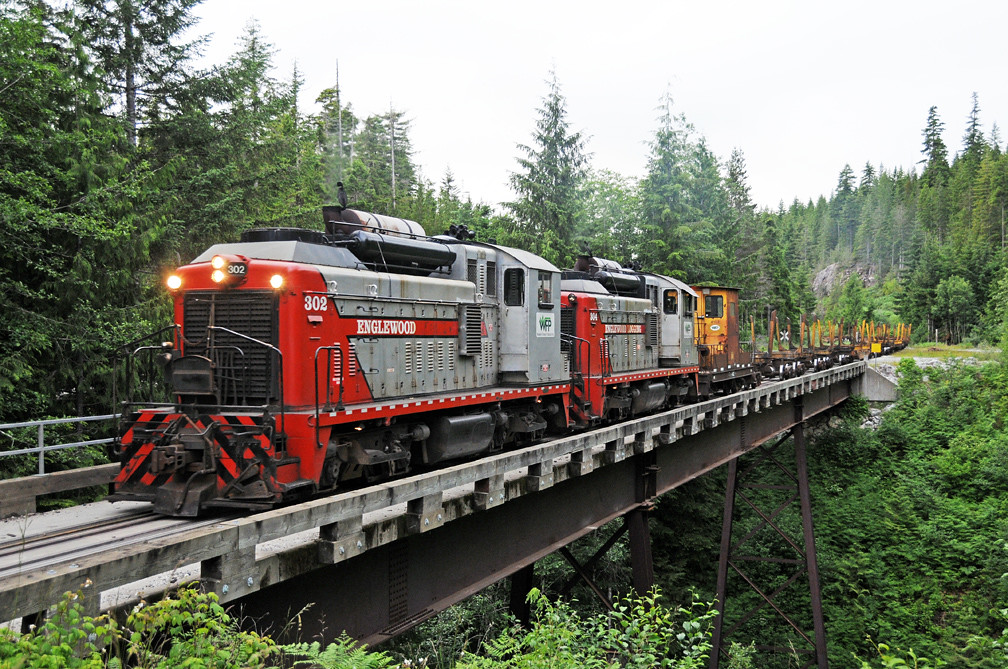The opportunity of N scale...
Until now, there has been a distinct lack of N scale on my blog. This wasn’t really a conscious decision, more a natural evolution of modelling from childhood in OO (1:76) scale. Whereas the garden inevitably took me to larger scales, narrow gauge modelling felt impossible below 1:76 scale...
 |
| An H0 scale Roundhouse MDC Shay built from a kit by my Dad, pictured with a Lifelike N scale SW1200. |
Seeing the Southern Alberta Railway and exploring the possibilities with N (1:160) when planning Beaverbrook (H0, 1:87) it feels like there is a conversation to be had about how a ‘dyed in the wool’ H0 scale modeller could adapt his skills, techniques and mindset to make the most of the smaller scale. In the same vein as previously Chris is here to help guide and explore this with me, over to him...
It's too easy to make a conversation about N scale into one about the size of the models and it's exhausting to read about "cramming more stuff into a smaller space" where we reduce the model railroad into a storage container. As I contemplate my own next layout I realise the story I want to explore with it is that journey from There to Here--not about the number of steps in that journey but my place as I move through them and observing the beauty of subtle yet no less deliberate motion. Instead of discussing N scale as in terms of how we process modelling to manufacture things we should have a conversation about how we share the journey--a story about how time is enjoyed leveraging the advantage of N scale's size to be the choice to represent the railroad's context and how it coexists in the space it lives within.
So let’s introduce the prototype that will help frame this discussion. Logging railways, not only an industrial prototype (as you probably have spotted industrials is one of my passions) but one that in the late 1980s my Dad very enthusiastically planned a H0 scale layout with an MDC Roundhouse Shay and cast metal skeleton cars (still in my collection). One of my favourite books is ‘Logging by Rail - The British Columbia Story’ by Robert Turner, and the photos of Canadian Forest Products (Canfor) yellow GMD SW1200RS really fired my imagination every time I flicked through it. Here were modern locomotives I recognised from both childhood models and more recent H0 acquisitions running amongst big trees, across deep ravines and with lines carved through mountainous terrain. It seemed North America’s last operational logging railway was something that would make a fascinating model and ape the ‘big scenery style’ of my Dad‘s layout projects.
I had begun to toy with building one of the locomotives in H0 scale to accompany my Shay in the display case, but this just hasn’t happened as it never really felt like it would have a real home. As is often the case a casual conversation with Chris as he developed ideas for his Manheim project where I shared I’d love to model the Englewood line in N led to him saying…
Always the apprentice enabler I can only begin with: “why not?”
"Why not" indeed. It’s how I also like impressionism in art. Thinking about my favourite places trackside, favourite photos, and favourite books I think about the way they make me feel and the comfort of that emotional touchpoint. This is where N scale really starts to shine--the models size is such that our typical interaction with them is a familiar wide angle view. If we ask each other what attracted us to that scene perhaps it's not the way the tie plates were designed, the way the air brake cylinders were mounted, or some like detail; maybe we talk about the railway and it’s place. Watching film of the Englewood Railway at work I was impressed with how deeply bedded into the forests the railway was and how this relationship coexists so anyone can sense it’s identity. It's easy to talk about how hard it is to see N scale and complain that's the reason not to model in it. What if that was the most compelling reason? An opportunity to step back and breathe in the bigger picture on this place, in a space as vast and diverse as the forests of British Columbia I just don't think we can experience that richness in any larger scale--we need things that will be hard to see and get lost in the scene so we see the trees and the forest.
The prototype ‘Englewood Railway’ was a division of Canfor, later Western Forest Products, serving the Nimpkish valley on northern Vancouver Island. From the logging camps south of Woss, headquarters of the rail operation, the railway meandered 56 miles north via Camp A south of Nimpkish lake. Originally two disparate systems where the logging trains from the forests dumped their loads for floating up the lake before reloading to trains for the journey to Beaver Cove on the coast - however in the 1950s a mainline was built connecting the northern rail operation to the south, by passing the time consuming and inefficient lake float operation and allowing log trains to run direct to Beaver Cove. A workshop was maintained at a Nimpkish, at the southern end of the lake, where repairs were made to the 4 locomotives and extensive stock of over 400 flat and skeleton logging cars.
The railway was dieselised when the lake line was constructed with three GMD SW1200RS numbered 301, 302 and 303. EMD had demonstrated a SW1200 on logging lines in the early 1950s, whose performance eclipsed even the largest of the rod coupled steam engines and it is said that Canfor management were impressed by both the performance and economies of diesel power. Later a fourth (304) was added second hand from the operation at Coos bay, a US build EMD unit. In the early 2000s Canfor undertook a rebuild program. 301, 302 and the newcomer 304 were re-engined with CAT 3512 1500hp power units as well as gaining a natty new silver and red livery. 303 retained it’s EMD 1200hp unit as well as it’s yellow paint. Life continued as it had done for 40 odd years until Canfor sold the operation to Western Forest Products. Under their ownership it is said that the railway was neglected, certainly poor attention on aspects of maintenance were key factors in the tragic accident in 2017 that led to the death of three employees and the closure and abandonment of North America’s last logging railroad.
However, despite it’s relatively remote location the operation was well documented by rail fans, several videos do a great job of showing how the operation worked. It is these videos that encouraged me that this couldn’t just be a cameo, or a shelf layout. This needed to be a ‘whole line’ project, something with the ambition to show the balance of empties and loaded log trains as well as work trains. This would only really work in a moderate UK style home setting in N, and in the following posts Chris and I hope to explore the opportunities in N through the lens of designing a scheme based on the Englewood Railway.
So the die is set, the dice is rolled, a pair of N gauge SW1200s sit on my workbench and we’ve another mini-series on our hands as Chris and I discuss how to begin making the most of the N opportunity. Until next time, more soon...



Comments
Post a Comment
Thank you for leaving a comment on my blog - I appreciate you taking the time to share your views. If you struggle to log in, please turn off the ‘block cross-site tracking’ setting in your browser.
James.